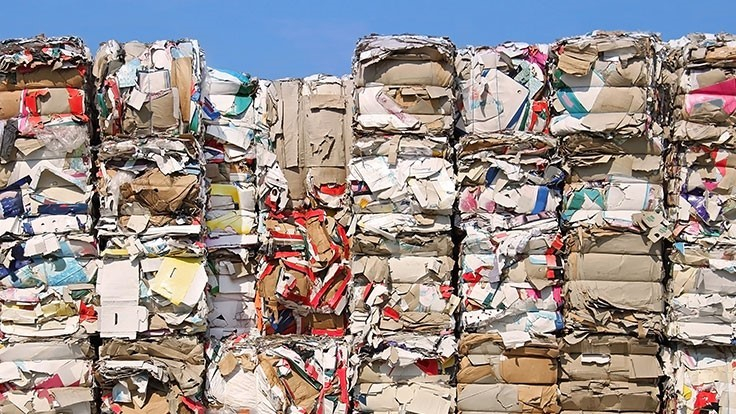Recovered paper supply a story of 'haves and have-nots'
One industry analyst says containerboard supply-demand conditions are as bad as they've been since the great financial crisis in 2009.
Old corrugated containers (OCC) pricing fell for the fourth straight month by as much as $20 per ton in some regions, and one analyst predicts pricing soon will reach an all-time low.
According to Fastmarkets RISI’s Pulp & Paper Week for Nov. 4, OCC pricing has dropped $97 per ton in four months, with the November U.S. average price at $29 per ton compared with $137 per ton in December of last year.
Adam Josephson, managing director and equity research analyst with KeyBanc Capital Markets Inc., Cleveland, said Oct. 30 in his third-quarter containerboard report that the industry’s operating rate dropped to 87.6 percent—the lowest in any quarter since the Great Recession in 2009—and supply of containerboard at box plants and mills rose to 4.8 weeks at the end of the third quarter, marking the highest in any month since February 2009.
He also notes that U.S. containerboard inventories increased by 151,000 tons from the second quarter, reaching nearly 3.02 million tons in September—the highest level for that month in at least 25 years (Data do not go back further.) and the highest level in any month since July 2000.
“The precipitous price declines that we’ve seen in the U.S. in recent months have been almost exactly the same as what has occurred in Europe and Asia, as well,” Josephson says. “These plummeting OCC prices are a global phenomenon, and it’s because demand for goods has evaporated globally.”
He adds, “Containerboard industry supply-demand conditions are as bad as they’ve been since the great financial crisis. Period.”
He writes that, “given how poor industry supply/demand conditions are and [are] likely to remain …we think substantial U.S. containerboard price declines are coming over the next two years, even if more containerboard mills [and] machines were to be permanently shut.”
A recovered paper broker based in the mid-Atlantic says the situation is especially problematic as the industry enters a traditionally low-generation season.
“Now, you’re in a situation where domestic is so low and export is going so high and keeps rising and rising and rising,” the broker says.
“We’re about to enter low-generation season around January and February, and if [overseas mills] didn’t keep inventory, they’re going to be in real trouble because they’re going to be buying and fighting the domestic mills, and everyone’s going to be fighting for supply,” he adds.
The lifting of some COVID-19 restrictions in China also has created a new dynamic in the recovered paper market as the Chinese mills need more finished product. “That means more orders for India and Malaysia,” the broker says.
He describes the situation as “the story of the haves and have-nots” and notes an instance where a mill said it was taking downtime around the holidays and asked the broker to divert his tons elsewhere, but as the mills got more orders, it came back and wanted those tons back.
“It depends on what part of the country you’re in,” the broker says. “If you’re in the Midwest and you don’t have an export option, you’re stuck with whatever the domestic mills can take, and a lot of the mills in the Midwest … they have a large presence out there and they’re full and they're backed up on inventory. But, if you talk to some of the mills on the coasts, it’s not nearly the same situation.”
In an interview earlier this month, Johnny Newsome, director of global mill supply and trade sales for Sonoco Recycling, Hartsville, South Carolina, echoed similar sentiments, saying the recovered paper market has had to make adjustments to account for “a very significant, rapidly depleting market price.”
“The industry’s having to shift trade flows, primarily from domestic mills to export markets,” he said. “The down market, with the new market dynamics, the buy-sell price gap, especially around fiber, has deteriorated significantly. So, our cost to operate is up with inflation. Our buy-sell price is lesser than it has been. The industry’s not nearly as profitable as it was last year.”
Source: https://www.recyclingtoday.com/article/recovered-paper-supply-a-story-of-haves-and-have-nots/


